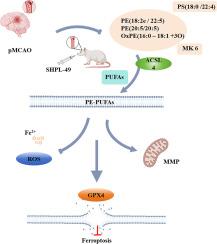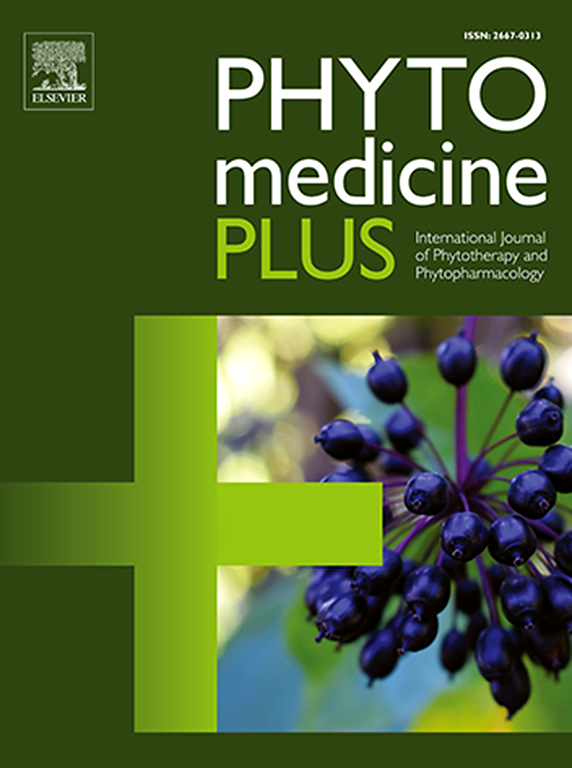Neuroprotective mechanism of salidroside derivative SHPL-49 involves amelioration of brain lipid metabolism disorder to mitigate ferroptosis in a rat model of pMCAO
Q3 Pharmacology, Toxicology and Pharmaceutics
引用次数: 0
Abstract
Ischemic stroke, characterized by high incidence and mortality, severely endangers human health. This study investigated the neuroprotective potential of salidroside derivative SHPL-49 (NB-SHPL-49-A-3, Supplementary Material 1). Male Sprague-Dawley rats with permanent middle cerebral artery occlusion (pMCAO) received oral SHPL-49 at 60 mg/kg and 90 mg/kg for 14 days, with Butylphthalide (NBP) as a positive control. In vivo, neurological function, infarct volume, cognitive ability, and grip strength were evaluated, and lipid metabolism and the ferroptosis-related ACSL4-GPX4 pathway were analyzed. In vitro PC12 cell oxygen-glucose deprivation (OGD) models were established. Results showed that 90 mg/kg SHPL-49 significantly improved neurological and cognitive functions, reduced infarct volume, regulated lipid metabolism, and inhibited ferroptosis via the ACSL4-GPX4 pathway. In conclusion, 90 mg/kg oral SHPL-49 protected against neurodegeneration and reversed lipid metabolism disorder in ischemic stroke rats.

红柳苷衍生物SHPL-49的神经保护机制包括改善脑脂质代谢紊乱以减轻pMCAO大鼠模型中的铁下垂
缺血性脑卒中发病率高、死亡率高,严重危害人类健康。本研究探讨了红景天苷衍生物SHPL-49 (NB-SHPL-49-A-3,补充材料1)的神经保护作用。永久性大脑中动脉闭塞(pMCAO)的雄性Sprague-Dawley大鼠分别以60 mg/kg和90 mg/kg剂量口服SHPL-49,连续14天,丁苯酞(NBP)为阳性对照。在体内,评估神经功能、梗死面积、认知能力和握力,并分析脂质代谢和与铁中毒相关的ACSL4-GPX4通路。体外建立PC12细胞氧糖剥夺(OGD)模型。结果显示,90mg /kg SHPL-49可通过ACSL4-GPX4途径改善大鼠神经功能和认知功能,减少梗死面积,调节脂质代谢,抑制铁下垂。结论:90 mg/kg口服SHPL-49对缺血性脑卒中大鼠神经退行性变和脂质代谢紊乱具有保护作用。
本文章由计算机程序翻译,如有差异,请以英文原文为准。
求助全文
约1分钟内获得全文
求助全文
来源期刊

Phytomedicine Plus
Medicine-Complementary and Alternative Medicine
CiteScore
3.70
自引率
0.00%
发文量
178
审稿时长
81 days
期刊介绍:
 求助内容:
求助内容: 应助结果提醒方式:
应助结果提醒方式:


